Identifying, explaining and conserving the diversity of Scotland's internationally important bryophyte flora
Bryophytes are the mosses, liverworts and hornworts, together comprising a major group of land plants that is evolutionarily quite distinct from the more familiar "vascular plants", or tracheophytes (the large group that includes all of the flowering plants, conifers and ferns). Only in the last few years has it become apparent that the bryophytes are probably a single group, all more closely related to each other than to the tracheophytes. These frequently overlooked and fascinatingly diverse plants have taken their own unique evolutionary path, characterised by small size and equilibriation with, rather than resistance to, ecological stresses.
Scottish Bryophyte Diversity Research
In partnership with conservation agencies and long-established specialist societies we conduct research targeted at priority conservation species and globally rare habitats in Scotland and the UK. Molecular phylogenetic studies are often able to identify undiscovered diversity in these inconspicuous plants, sometimes representing new species, or revealing that known ones are far more unique and important than we had previously thought. This informs targeted conservation efforts, for example in the case of Orthodontium gracile, a very rare species in the UK that is threatened by the superficially very similar Orthodontium lineare, introduced around a century ago from the Southern Hemisphere. Our research has shown that these two species are rather distantly related and that our native O. gracile also occurs in the Himalaya, being much more closely related to a very different-looking Himalayan species than it is to the almost identical-looking O. lineare.
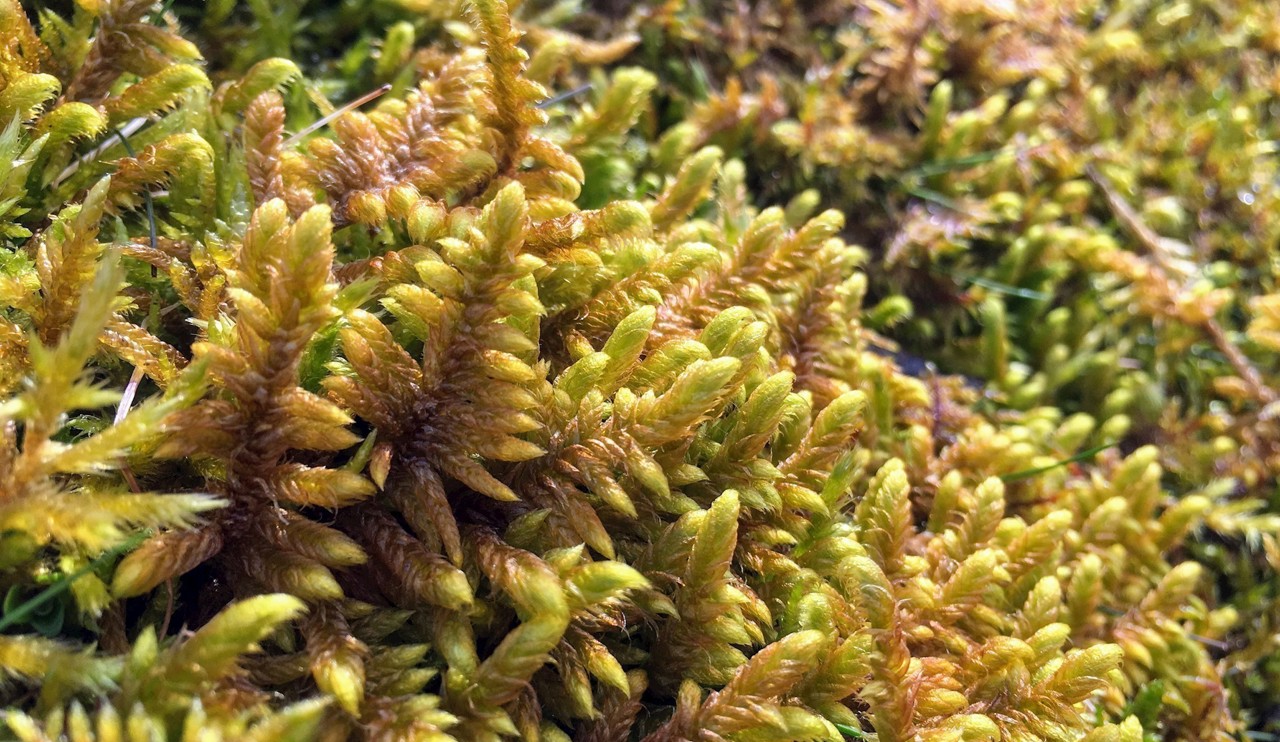
Rhytidium rugosum, a lime-loving moss that is fairly rare in Scotland and the UK
This link between Scotland and the Himalaya is typical of the long-range disjunctions that characterise many of the rarer elements of our bryophyte flora. Our western oceanic bryophyte communities have very few parallels anywhere else in the world, with a number of species otherwise found only in western North America, Macaronesia or the Himalaya. Ecologically similar communities occur in oceanic southern temperate regions (New Zealand, Eastern Australia, Western Patagonia) but are largely unrelated taxonomically. A current focus of research is the "oceanic-montane heath" community of rare liverworts found in the dampest and most sheltered corries of the far north and west of Scotland, a number of which (such as Plagiochila carringtonii, pictured here) are disjunct with the Himalaya.
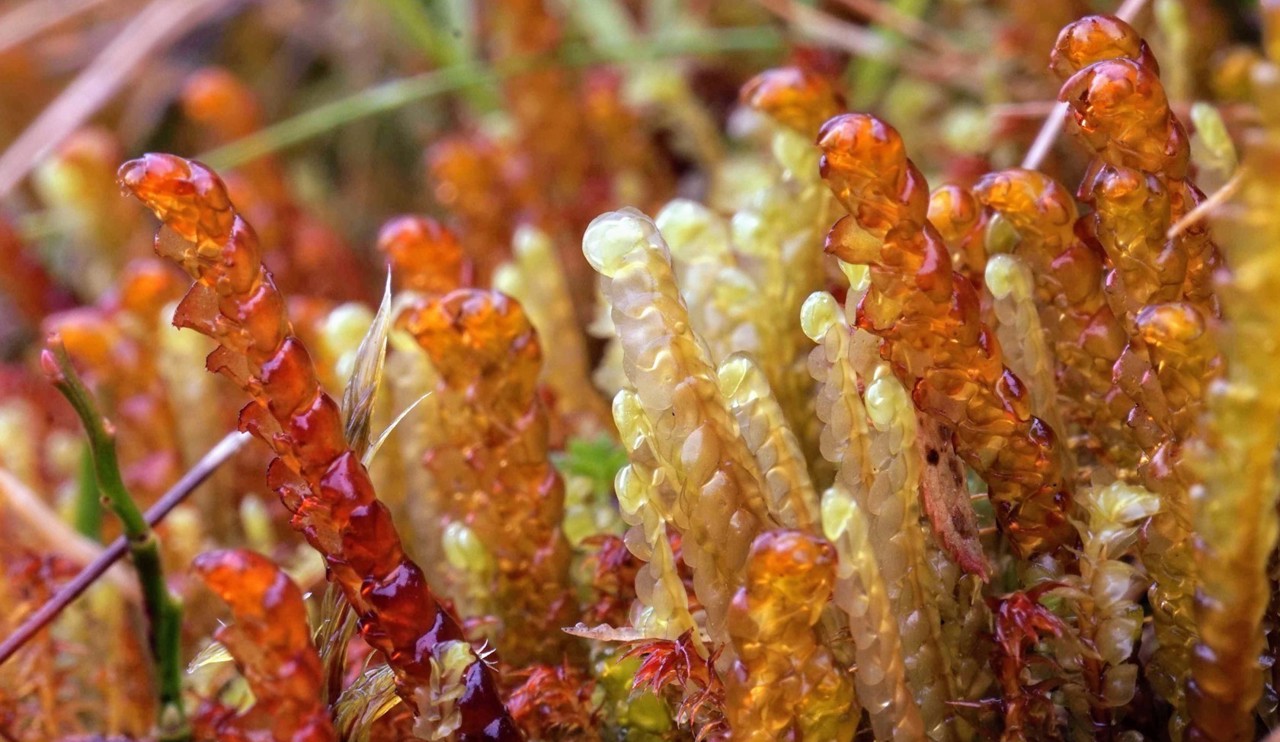
Plagiochila carringtonii (the pale plants in the centre) with Pleurozia purpurea

Plagiochila carringtonii
Bryophyte Phylogenetics and Taxonomy
We have world-leading taxonomic and phylogenetic expertise in several bryophyte groups, including the moss class Polytrichopsida, complex thalloid liverworts and "early-diverging" pleurocarpous lineages.
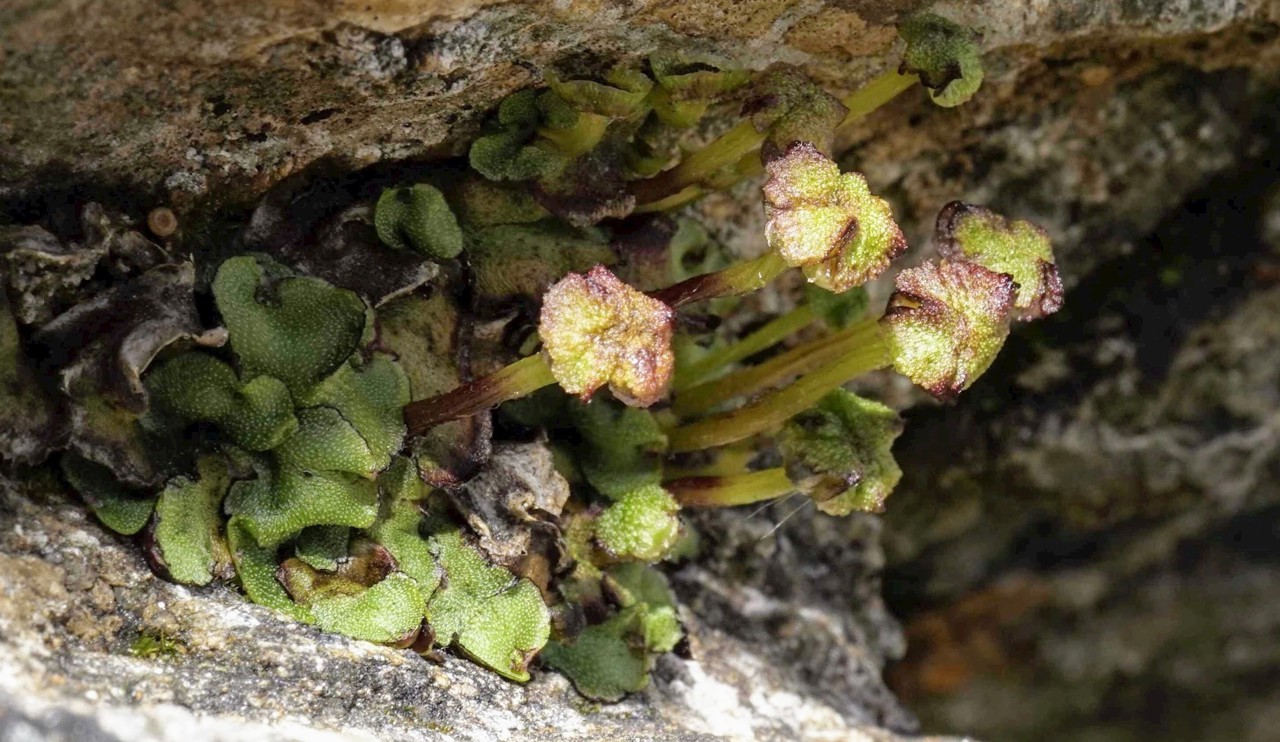
Marchantia quadrata (previously Preissia quadrata), a complex thalloid liverwort often found on limestone and mica schist ledges in the Scottish mountains
The focus on early-diverging pleurocarps relates to research into the evolution of plant architecture in mosses. The pleurocarps comprise around half of all moss species and appear to have undergone a relatively recent rapid evolutionary radiation founded on a mode of branching of the fertile modules that allows reproduction to be partially decoupled from vegetative growth. This innovation may have made more complex branching forms viable in pleurocarpous mosses, in turn allowing them to exploit a wider range of habitats. The early-diverging pleurocarpous lineages, now largely restricted to the Southern Hemisphere, show a greater diversity of architecural forms and may provide clues about how pleurocarpy evolved.
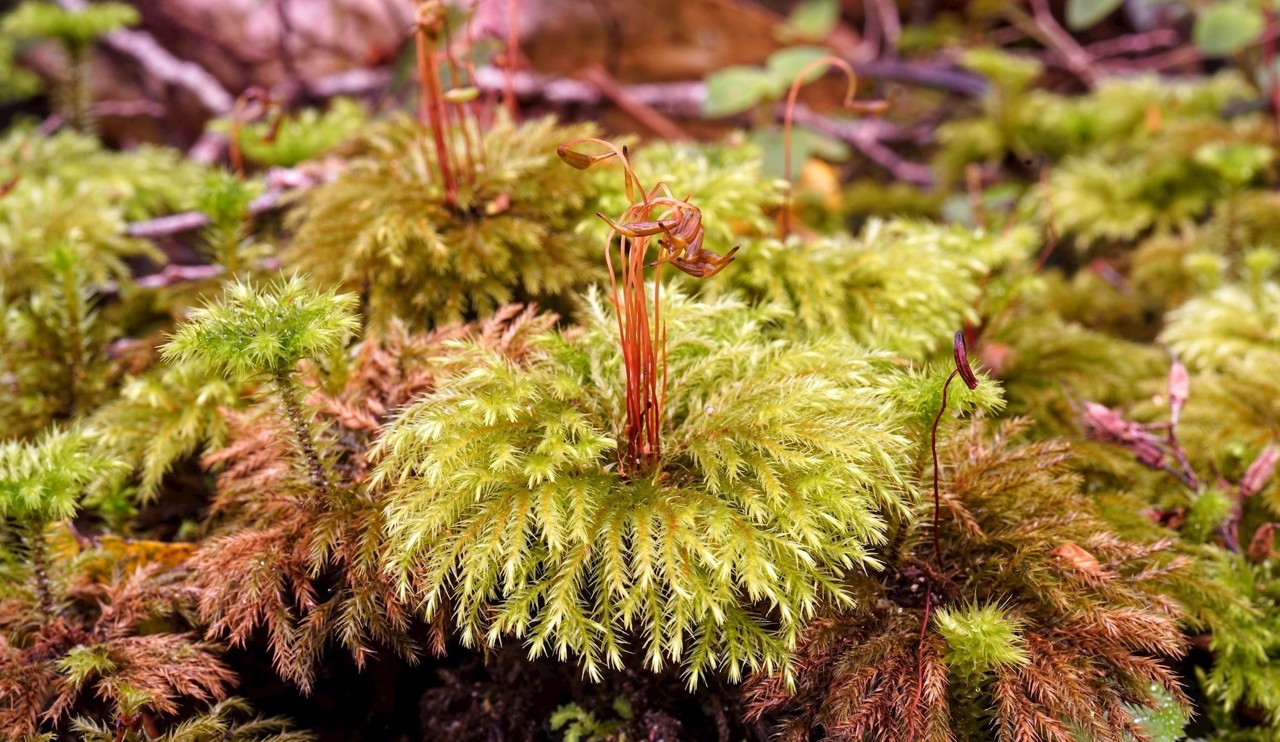
Mniodendron comatum, a "dendroid" (tree-like) moss endemic to New Zealand
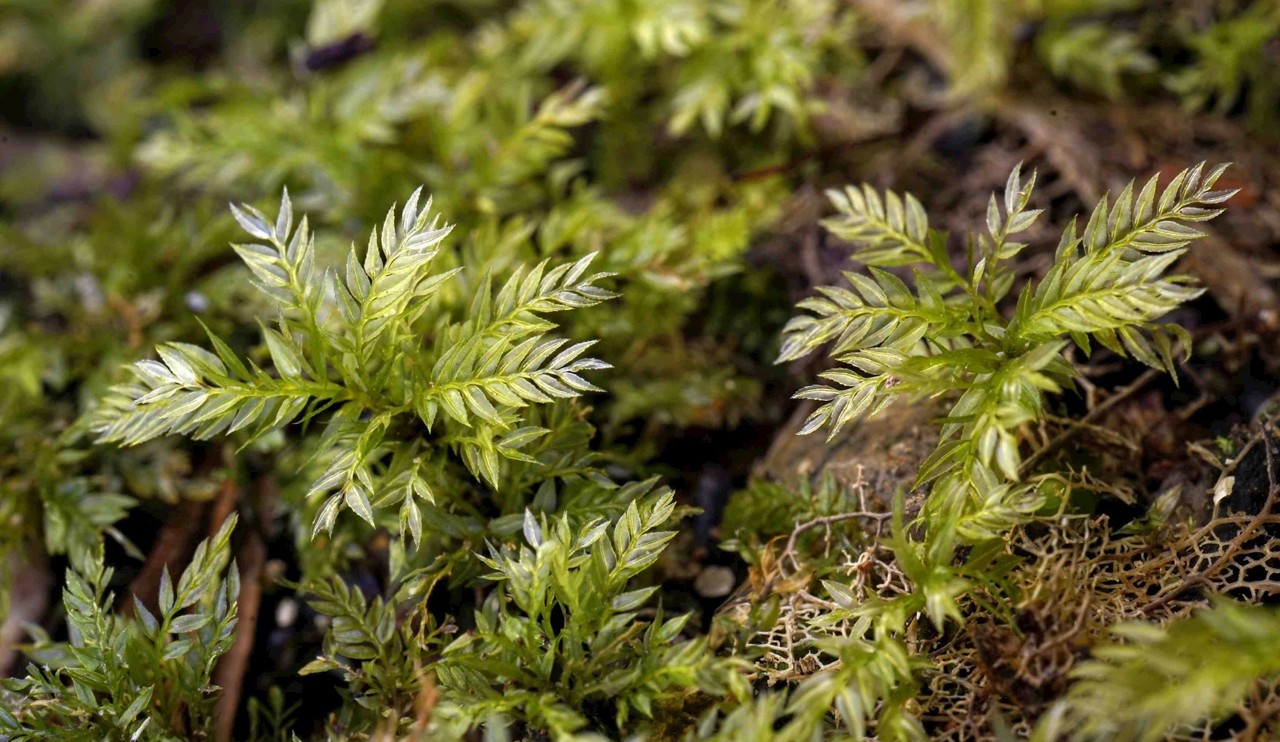
Hymenodontopsis bifaria, one of the simplest dendroid mosses. The species is still treated in the genus Pyrrhobryum in the Flora of New Zealand (as P. bifarium), although both molecular data and branching archtecture reveal its closer affinities to the main group of pleurocarpous mosses (including Mniodendron comatum above).

